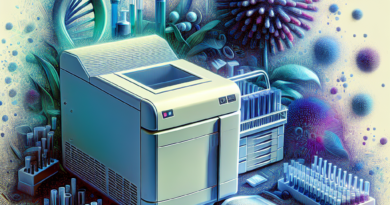Prevalence and Virulence of Shiga Toxin-Producing E. coli in Minced Beef from Spain
Understanding Shiga Toxin-Producing Escherichia coli (STEC)
Shiga toxin-producing Escherichia coli (STEC), also known as verocytotoxin-producing E. coli (VTEC), are a group of bacteria capable of causing serious food-borne infections in humans. These infections can lead to severe and potentially fatal illnesses, including haemorrhagic colitis (HC) and haemolytic uraemic syndrome (HUS). STEC infections are particularly concerning because they can arise from common sources such as undercooked minced beef and raw milk, making them a significant public health issue.
To understand the risks associated with STEC, it’s important to grasp the concept of serotypes. Serotypes are distinct variations within a subspecies of bacteria or virus, classified based on the antigens on their surfaces. In the case of STEC, certain serotypes like O157:H7 are notorious for causing outbreaks and severe illness. However, non-O157 serotypes are more prevalent and can also pose a health risk, as they are commonly found in animal reservoirs and can contaminate food products.
The virulence of STEC strains is largely attributed to their production of Shiga toxins (Stx1 and Stx2) and other virulence factors such as intimin, encoded by the eae gene, which is involved in the attachment of the bacteria to intestinal cells. The presence of these factors can greatly influence the pathogenic potential of the strains.
Quantifying the Prevalence of STEC in Minced Beef
Study Results
In a comprehensive study conducted in Lugo, Spain, between 1995 and 2003, researchers investigated the prevalence of STEC O157:H7 and non-O157 in minced beef samples collected from 30 local stores. A total of 785 samples were tested, revealing that STEC was present in 95 samples (12%). Specifically, STEC O157:H7 was isolated from eight samples (1.0%), and non-O157 STEC from 90 samples (11%).
The study also found a correlation between the level of fecal contamination and the presence of STEC, with the highest prevalence in samples containing more than 999 E. coli per gram. This finding underscores the importance of hygiene and proper handling of beef to prevent contamination.
Virulence Profiles of STEC Isolates
The researchers characterized 96 STEC isolates for their virulence genes. The results were quite specific:
- 28 isolates (29%) carried stx1 genes
- 49 isolates (51%) possessed stx2 genes
- 19 isolates (20%) had both stx1 and stx2
- 43 isolates (45%) contained the enterohemolysin gene (ehxA)
- 25 isolates (26%) tested positive for the intimin gene (eae)
These isolates belonged to 42 different O serogroups and 61 O:H serotypes, including 10 new serotypes not previously described in raw beef products. Significantly, 68% of the isolates were of serotypes previously found in human STEC infections, and 38% were associated with HUS cases.
Impact and Future Prospects of STEC Research
The study’s findings are consistent with international data on the prevalence of STEC in minced beef. It highlights the importance of non-O157 serotypes in food contamination in Spain, including highly virulent seropathotypes such as O26:H11 stx1 eae-β1. The detection of these seropathotypes in minced beef confirms the potential risk they pose to human health.
From a public health perspective, the study reinforces the need for stringent control measures throughout the food production chain. The implementation of Hazard Analysis and Critical Control Point (HACCP) programs could significantly reduce the contamination of minced beef and, consequently, the incidence of STEC-related illnesses.
As for future prospects, the research suggests a continued focus on improving food safety protocols and expanding surveillance to include a broader range of STEC serotypes. Additionally, educating consumers on safe food-handling practices and the risks associated with consuming raw or undercooked meat products is crucial.
While the study is not revolutionary, it is an important step in understanding the prevalence and characteristics of STEC in food products, which is essential for developing effective strategies to prevent food-borne illnesses.
Reference
Mora, A., Blanco, M., Blanco, J. E., Dahbi, G., López, C., Justel, P., Alonso, M. P., Echeita, A., Bernárdez, M. I., González, E. A., & Blanco, J. (2007). Serotypes, virulence genes and intimin types of Shiga toxin (verocytotoxin)-producing Escherichia coli isolates from minced beef in Lugo (Spain) from 1995 through 2003. BMC Microbiology, 7(1). http://dx.doi.org/10.1186/1471-2180-7-13




